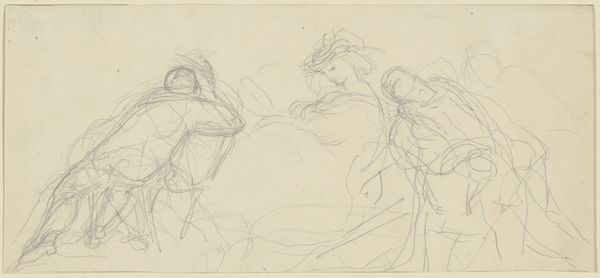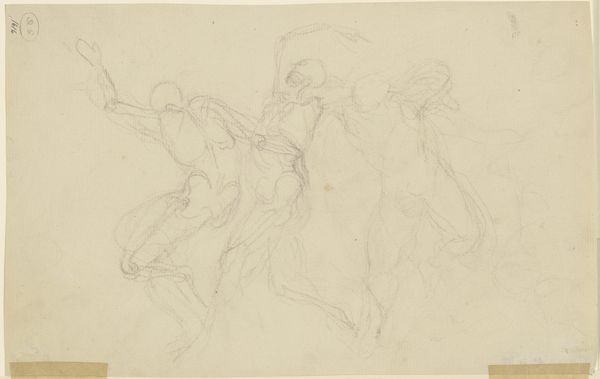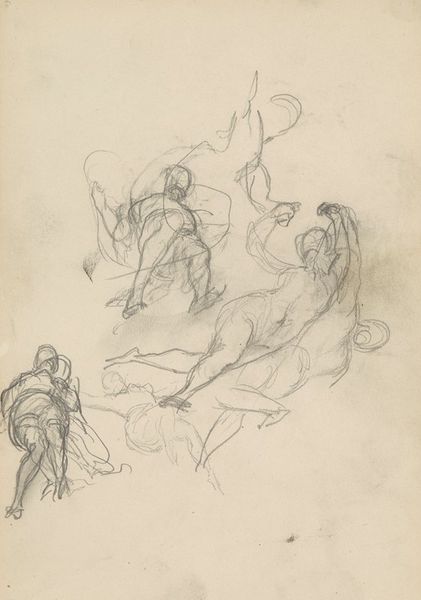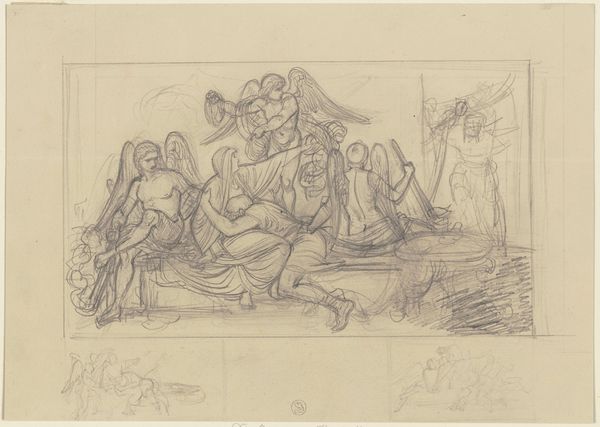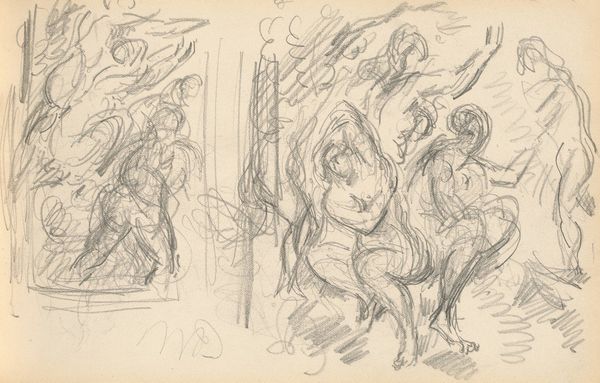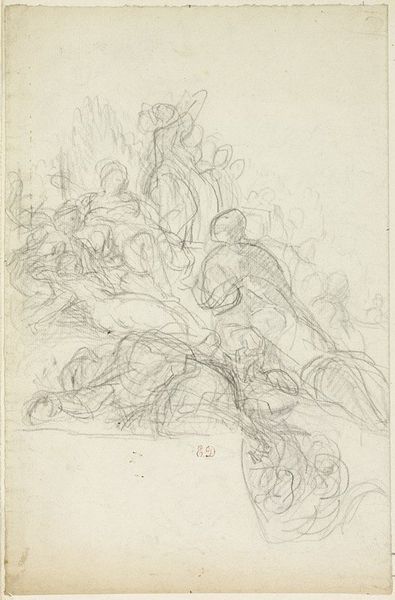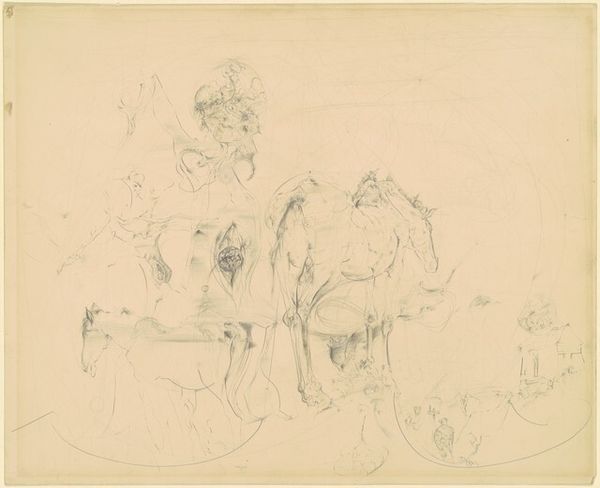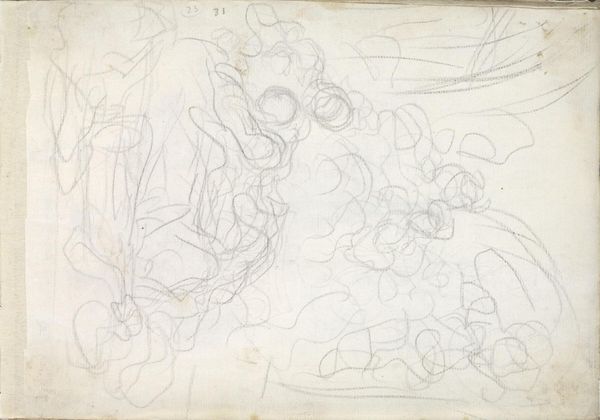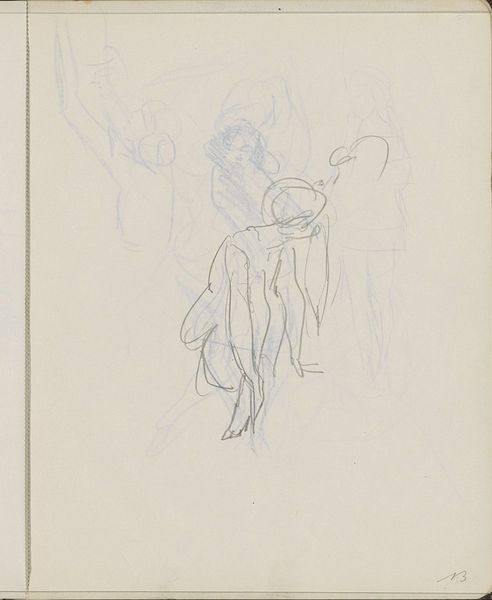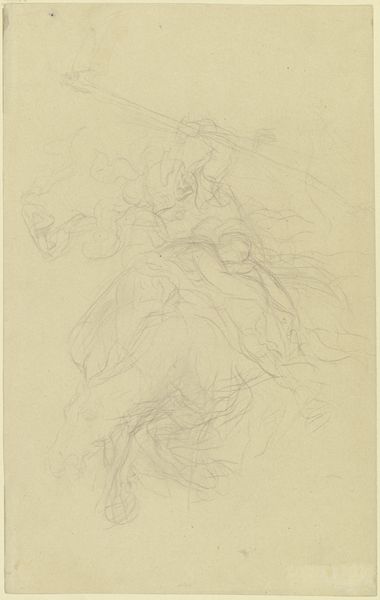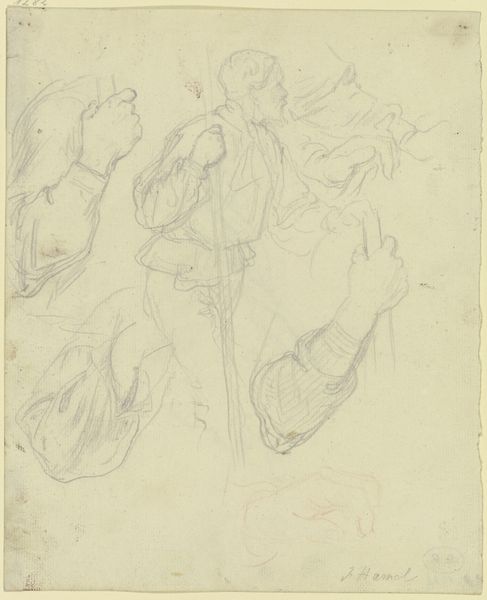
Copyright: Public Domain: Artvee
Editor: Here we have Eugène Delacroix’s "Study for Marphise and the Mistress of Pinabel," circa 1852. It's a pencil and ink drawing. I am struck by the artist's use of lines to capture a sense of movement. What catches your eye in this composition? Curator: The dynamism inherent in the piece arises principally from the kinetic quality of the lines themselves. Notice how Delacroix uses hatching and cross-hatching, not so much to model form realistically, but rather to suggest the vibration of light and the instability of the scene. Consider also how the spatial relationships, particularly between the figures and the horse, remain ambiguous. Is this ambiguity intentional, an aesthetic choice, or simply a byproduct of it being a preliminary study? Editor: That's interesting. It does seem less about precise representation and more about conveying raw energy. Do you see any evidence of Romantic ideals in the drawing, like a focus on emotion or drama? Curator: Most assuredly. The Romantic ethos privileged subjective experience over objective reality. Observe how Delacroix prioritizes the suggestion of emotion, through gesture and dynamic composition, above precise anatomical correctness. The whirlwind of lines itself conveys a kind of passion, doesn’t it? Note the directionality inherent in the diagonal lines - they are activated, leading our eye towards what, in essence, we can deem a kind of unstable climax in representational terms. Editor: So, it's almost like the formal qualities become the very expression of Romantic ideals? Curator: Precisely. The artwork becomes a testament to the potential of line and composition to manifest and convey even intense emotion without relying on traditional, illustrative means. A dialogue of energy contained by form itself. Editor: That’s given me a whole new appreciation for what I'm looking at. I was focused on the subject matter initially, but the visual elements tell a more important story about capturing a fleeting moment and strong emotion. Curator: Indeed. Formal analysis allows us to excavate the very means by which the artwork constructs meaning. I think this helps me re-evaluate the drawing myself, which will encourage me to see other art through a fresh perspective too.
Comments
No comments
Be the first to comment and join the conversation on the ultimate creative platform.
